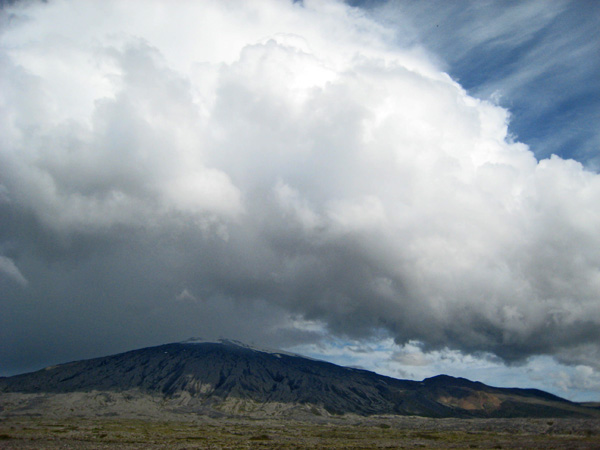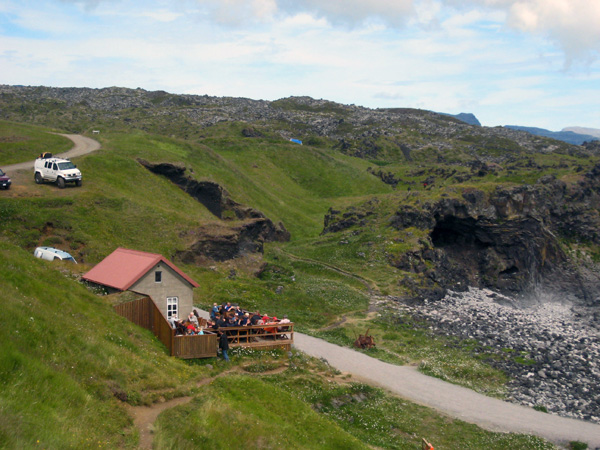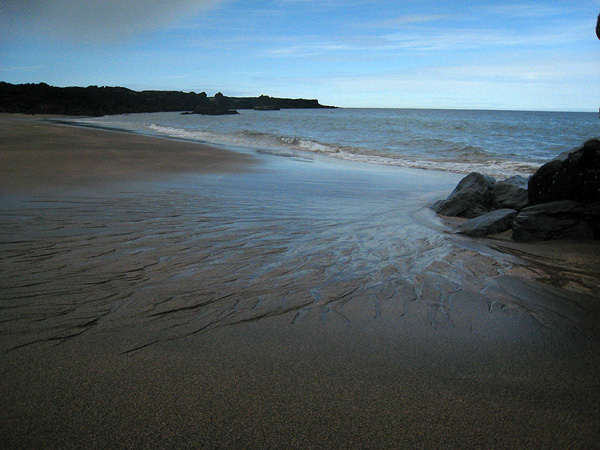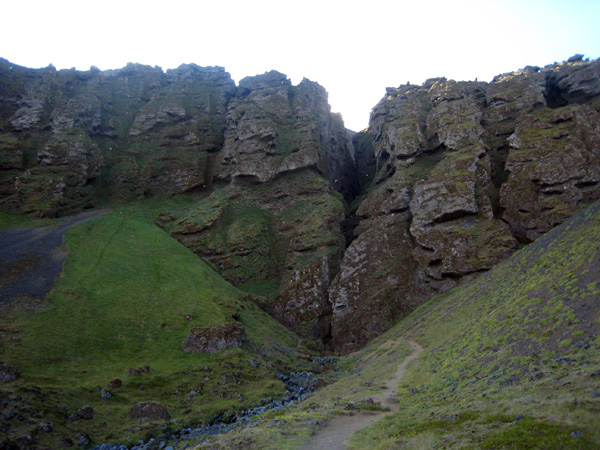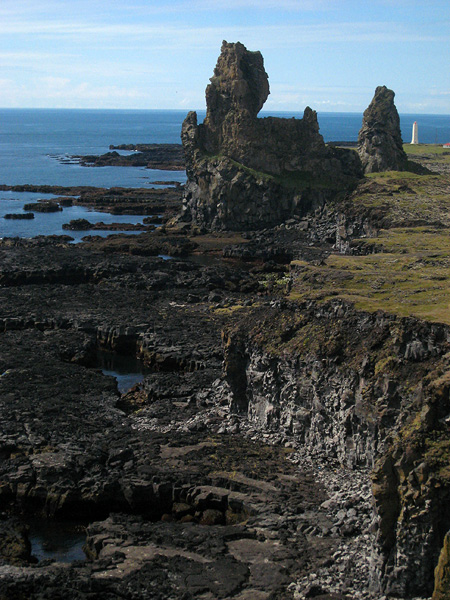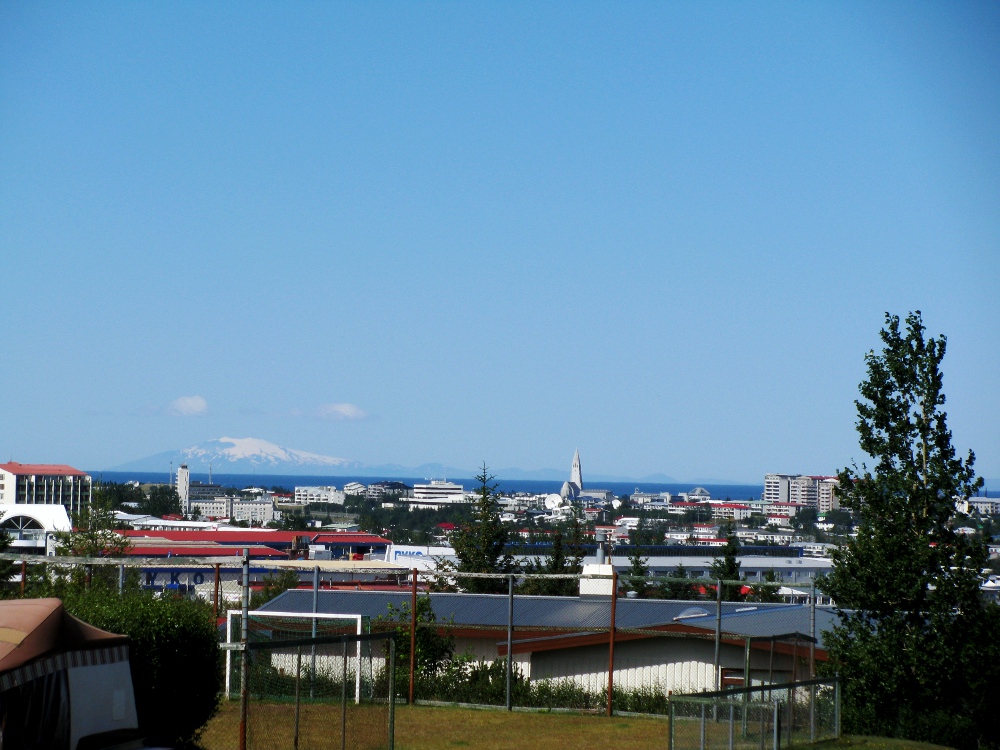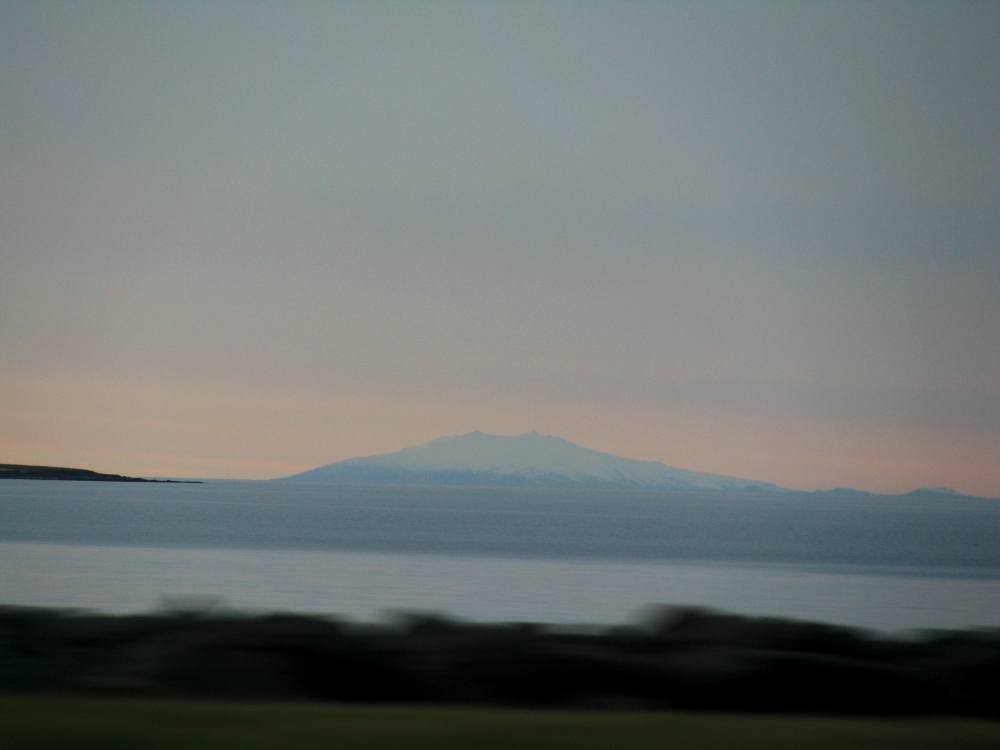Snæfellsness, Iceland in miniature. Posted by hulda on Nov 30, 2012 in Icelandic history
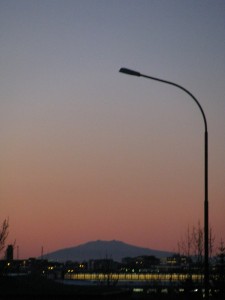 If you look over Faxaflói (= Horse mane bay) on a clear day you can see the white peak of Snæfellsjökull (= Snow mountain glacier) on Snæfellsnes (= Snow mountain cape) over a hundred kilometres away. It’s the tallest mountain of the peninsula, rising over 1400 m from the sea, and considered the most beautiful glacier of the whole Iceland. Its name is actually simply Snæfell but it’s called Snæfellsjökull to separate it from the other mountains of the same name. The area surrounding it is one of the four national parks of Iceland and reaches all the way to the sea.
If you look over Faxaflói (= Horse mane bay) on a clear day you can see the white peak of Snæfellsjökull (= Snow mountain glacier) on Snæfellsnes (= Snow mountain cape) over a hundred kilometres away. It’s the tallest mountain of the peninsula, rising over 1400 m from the sea, and considered the most beautiful glacier of the whole Iceland. Its name is actually simply Snæfell but it’s called Snæfellsjökull to separate it from the other mountains of the same name. The area surrounding it is one of the four national parks of Iceland and reaches all the way to the sea.
The peninsula itself is often called “Iceland in miniature”. Here you will see lava fields, sandy beaches, meadows, mountains, caves, an active volcano (it hasn’t erupted in two thousand years though), many historical sights, some of which reach back all the way to the time of the first settlers of Iceland and of course, a glacier.
Clouds over the glacier. This photo is a couple of years old but notice how small the glacier is. This year’s August was the first time in recorded history that the summit was completely ice free, says Wikipedia.
Those of you who have read the book “A Journey to the Center of the Earth” by Jules Verne probably remember that this is the place where they began their descend, from the crater of Snæfellsjökull. Back in the days of Mr Verne a trip to the top of the mountain was risky due to the ever changing weather conditions, but now there are several easy and safe ways of visiting the peak. This year a group of mountaineers even began to arrange trips to the magma chamber. There’s an amazing photo gallery and some videos of the trip over here.
I have taken loads of photos of the peninsula itself of course, so here are some choice ones from my collection:
One of the best little cafe/restaurants of Iceland, Fjörukaffi.
A sandy beach area. Snæfellsnes is full of archaeological finds, this beach is close to a place where they found several cairn type viking era graves.
A ravine that you can climb all the way up to the top of the mountain.
Remember this troll, or the Lóndrangar pillars? What about Kolbeinn Jöklaskáld and his poetry battle with the devil? It all happened on Snæfellsnes!
The area has a reputation for all kinds of paranormal phenomena, by the way. Some believe the top of the glacier to be a place where extra-terrestrials meet, others say the volcano has a magical aura. I found one account that mentioned not sleeping the whole time they were near the mountain but I have to be a little bit skeptical – there have been people living at the close proximity of the volcano and its glacier from the Medieval times and they probably did sleep every now and then. Perhaps the midnight sun has been of assistance here!
Snæfellsnes is frequently found in Icelandic literature. Many characters of Laxdæla saga were born in this area, Halldor Laxness’ book Kristnihald undir jökli, Under the Glacier, places heavy importance on it and of course the half giant Bárðar of Bárðar saga Snæfellsáss ok Gests used to have his home here. He eventually walked into the crater of the volcano and disappeared but the local lore says he still wanders around the area, helping people who are in danger. You can tell him by his long, grey cloak and his walking stick he uses to walk on the glacier. However, in case you end up needing help, try calling 112 first because Björgunarsveitinn is faster at locating people. Unless of course your problem is trolls, then Bárðar is your man.
Having visited this area I can still sincerely call the area magical indeed, although possibly for different reasons. The whole peninsula is so beautiful that it’s hard to believe it’s real. There are many well-equipped camping sites and walking paths all around so if you’re here during the summer and have the time, I wholeheartedly recommend visiting Snæfellsnes. Be prepared though that the birds might keep you up all night if the midnight sun or the occasional groups of singing Icelanders don’t do it, and in the morning you may be woken up by either noisy ravens, wandering sheep or Icelandic horses looking for treats.

Build vocabulary, practice pronunciation, and more with Transparent Language Online. Available anytime, anywhere, on any device.
About the Author: hulda
Hi, I'm Hulda, originally Finnish but now living in the suburbs of Reykjavík. I'm here to help you in any way I can if you're considering learning Icelandic. Nice to meet you!



